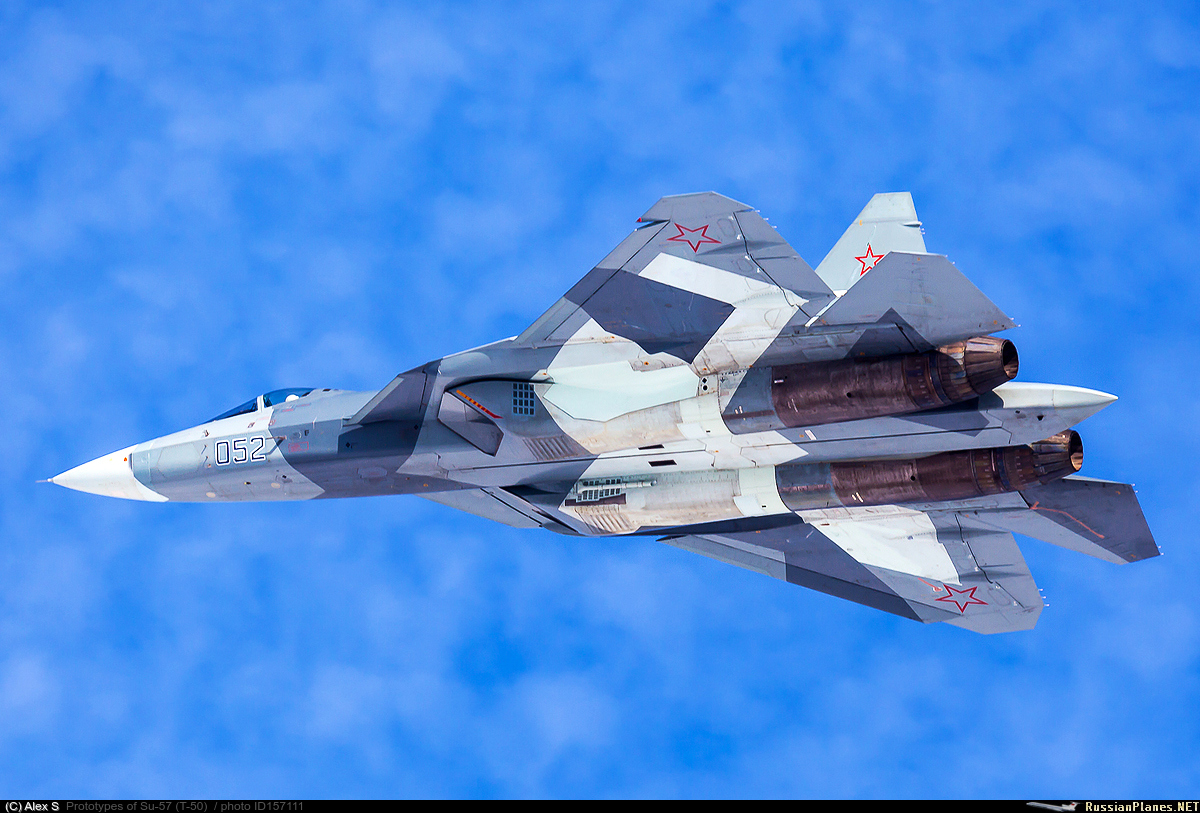The bypass streams both take the air from different stages of the LPC but do not interfere with the core, so the statement that the same gas generator will be used for the PAK-FA, LFI and PAK-DP makes perfect sense (even if the PAK-DP would use a fundamentally different regime proper of an ABVCE for high speed) and then, considering the logical improvement of the technological parameters over the development period (izd. initiated development ca. 10 years before this new 3 stream engine), a very similar core could be used for the new engine, without having to start from scratch. So the izd. 30 basic technological generation could comprise the current engine under flight tests and then another one with the improved bypass features substituting it on a relatively short term (MLU or even from production line, for the PAK-FA ordered after 2030-35). This all in line with the claims, that the Su-57 could be developed into a 6G plane that were received with laughs in the West. All speculative by now, but I am fairly sure that Russia, arriving so late to the 5G camp, dedicated a good amount of thought to the possibility that US would skip the normal development of their 5G altogether and try to leapfrog the PAK-FA upon its arrival to the VKS and the ways of preventing it with an advanced enough airframe and an ambitious, long term development roadmap. That strategy looks fully supported by the latest news that we are reading now.
BTW this news about the izd. 30 I found is old (2012) but relevant (often the best information is the oldest one, regarding Russian weapons):
Bench tests of a fundamentally new engine (the engine of the second stage) for the Russian fifth-generation PAK FA aircraft will begin in 2014, said Yevgeny Marchukov, General Designer-Director of the Scientific and Technical Center named after Lyulka, NPO Saturn.
"In iron, the engine will be ready in two years, and bench tests will begin, it will be fine-tuned," Marchukov said at the 11th International Conference "Aviation and Cosmonautics-2012", which opened at the Moscow Aviation Institute on Tuesday.
According to him, the new "engine 117" will belong to the "5+" generation and in its characteristics will surpass the existing foreign analogues of engines for fifth-generation aircraft.
"This is a fundamentally new engine, so it is being created for quite a long time. The engine has a specific weight of 30% less (than the 117C-approx.), the cost of the life cycle is also 30% less, and it should be cheaper, " said E. Marchukov.
https://vpk-news.ru/news/13148?utm_source=warfiles.ru
I had not seen such a clear indication about izd. 30's thrust before, that specific weight indication means that it should have, depending on the real weight of the unit, between 16.8 tf (for 1300 kg weight scenario, due i.e. to reduction of engine stages and lighter materials than AL-41F1) to 18.2 tf (for 1400 kg, slightly more than izd 117 if for instance additional observability reduction means are included or, if being VCE, the variable inlets etc increase weight). I therefore think that expecting a thrust of 17-17.5 tf is fairly reasonable. TWR of the engine would be an outstanding value of almost 13, above F135 from what we know and probably close to the new US adaptive engines with extra 10% thrust.


 LMFS
LMFS





